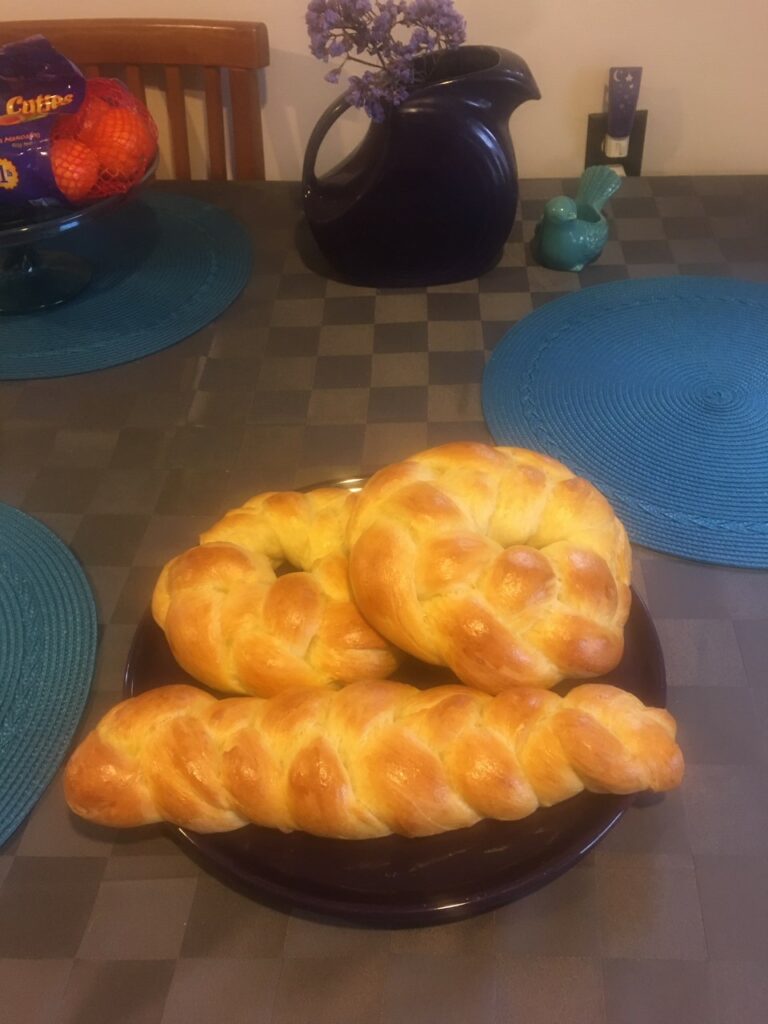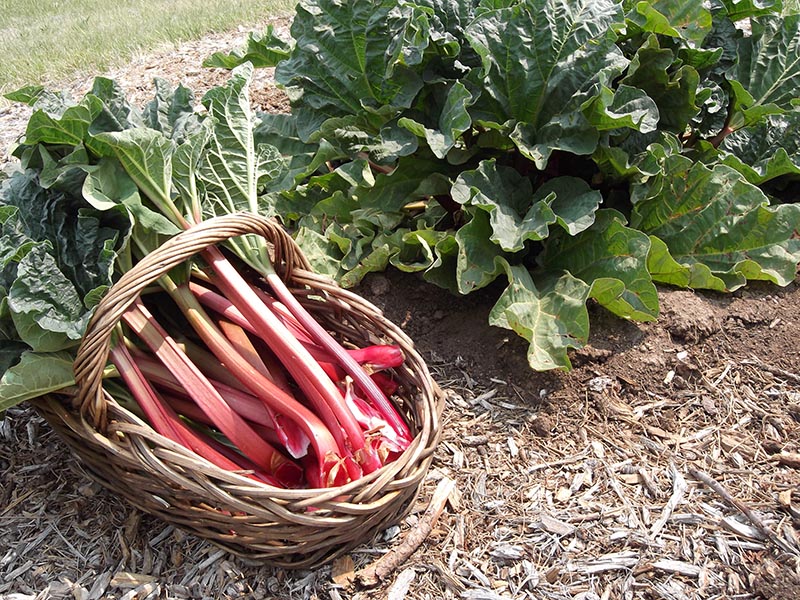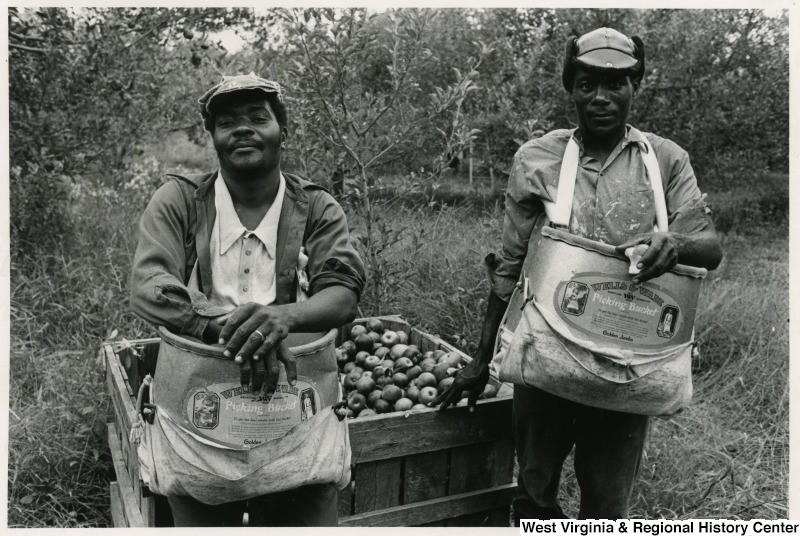Mock Apple Pie
Posted by Jane Metters LaBarbara.August 18th, 2020
Initial research and writing by Jessica Eichlin, Reference Supervisor, WVRHC; additional writing and pie making by Jane LaBarbara, Assistant Curator, WVRHC.
Today I’d like to look at mock foods. The Oxford Encyclopedia of Food and Drink in America defines “mock foods” in a number of different ways[1]. A mock food can be a dish made with the substitution of a primary ingredient, a food that tastes like another, a dish that looks like another, an economical alternative, a dish with less of a key ingredient, or a dish made with vegetarian alternatives. Mock foods can trace their roots back to the medieval period, where expert chefs would manipulate the appearance of a dish to impress or entertain eaters. In one way or another, mock foods have persisted since the medieval period.
Curious about the presence of mock dishes in West Virginia, we turned to the collections at the West Virginia and Regional History Center. Seven cookbooks sampled by Jessica yielded a dozen different recipes for mock cherry pie, mock apple pie, mock duck, mock oysters, and mock turtle soup. The presence of mock dishes in these cookbooks indicates their popularity in the region, as most of the cookbooks she sampled were those with recipes submitted by community members. Mock dishes likely appealed to cooks in West Virginia in the early 1900s who were tasked with creating familiar dishes using the resources at hand. Resourceful cooks turned to mock dishes because the usual ingredients were either too hard to obtain or expensive. With West Virginia’s rugged terrain, isolation often forced cooks to creatively bake with what they could get and what they could afford, not just during times of particular hardship such as war or economic downtimes. Mock foods seem like a great COVID-19 pandemic blog suject because they have a bit of a “what can I make with pantry staples without having to mask up and go to the store” vibe.
The mock food item I want to focus on today is mock apple pie. Mock apple pie has a long history. Thanks to the Food Timeline website’s entry on mock apple pie, I found a recipe for “cracker pie” from the February 14, 1857 issue of the Saturday Evening Post: “CRACKER PIE—As apples are very scarce in many sections of the country, I think the housewife will find the following recipe for making an apple pie out of crackers, very acceptable. For a common sized baking plate, take four of the square or six of the round crackers, a teacupfull of sugar, and a teaspoonfull of tartaric acid; break the crackers into a pint of water, add the sugar and acid and finish as an apple pie.”[2]
Potentially the most well known version of mock apple pie was introduced to Americans by Nabisco in the 1930s, as a way to use their Ritz crackers when apples were perhaps out of season or too expensive. The “Mock Foods” entry in the Oxford Encyclopedia of Food and Drink in America confirms that the Ritz recipe “evolved from mid-nineteenth-century imitation apple pies and mock mince pies, which were made with soda crackers [a.k.a. saltines], sugar, and spices. Crackers have a history of approximating apple pie in both texture and taste.”
That last sentence is where things get contentious. When I explained to my husband that I would be making this pie and asking him to taste test it, he expressed skepticism at the idea that mock apple pie could taste similar to apple pie, or even be something worth eating. When I suggested that apple pie doesn’t really taste like apples, and that crackers and spices could come close to the same taste, he expressed mock dismay that I didn’t remember how the apple pies that he makes actually taste like apples.
A Book of Favorite Recipes Compiled by Bruceton Mills Community, 1965, includes two recipes for mock apple pie, both made with Ritz crackers, on pages 44-45. Since the second recipe includes attribution, cinnamon, and a baking time, I decided to try that one. I’ve copied both below in case someone wants to give the first one a try.
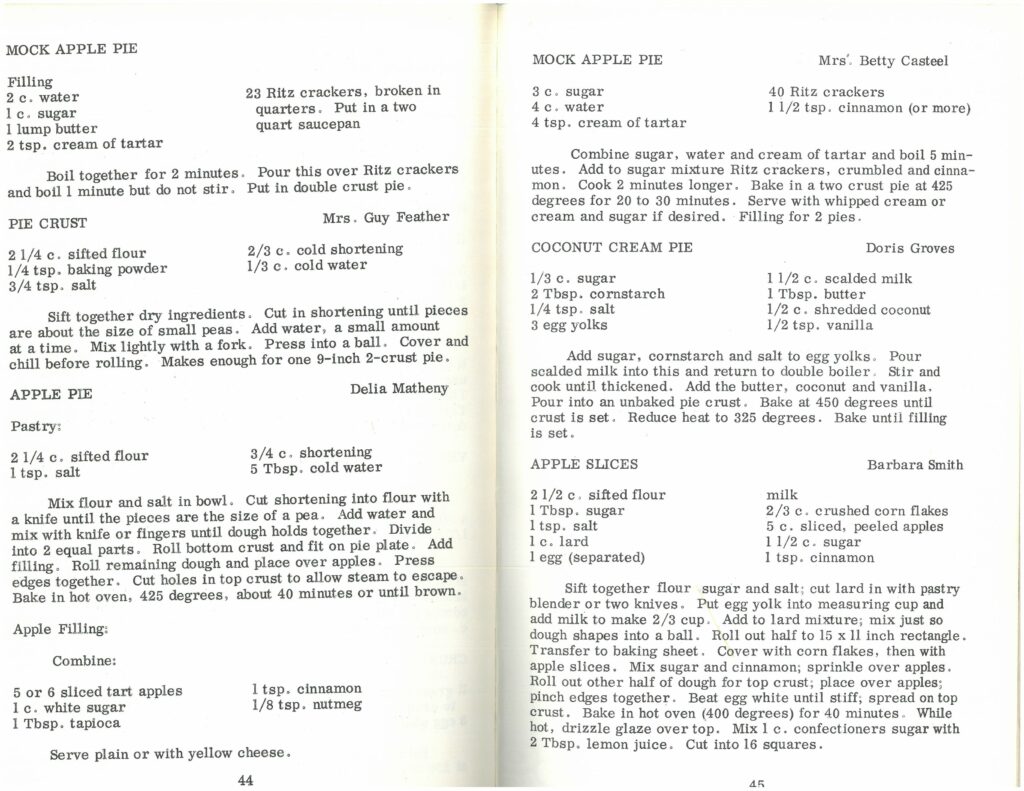
Mock Apple Pie (no attribution)
Filling
2 c. water
1 c. sugar
1 lump butter
2 tsp. cream of tartar
23 Ritz crackers, broken in quarters. Put in a two quart saucepan
Boil together for 2 minutes. Pour this over Ritz crackers and boil 1 minute but do not stir. Put in double crust pie.
—
Mock Apple Pie, Mrs. Betty Casteel
3 c. sugar
4 c. water
4 tsp. cream of tartar
40 Ritz crackers
1 ½ tsp. cinnamon (or more)
Combine sugar, water, and cream of tartar and boil 5 minutes. Add to sugar mixture Ritz crackers, crumbled and cinnamon. Cook 2 minutes longer. Bake in a two crust pie at 425 degrees for 20 to 30 minutes. Serve with whipped cream or cream and sugar if desired. Filling for 2 pies. [emphasis added]
—
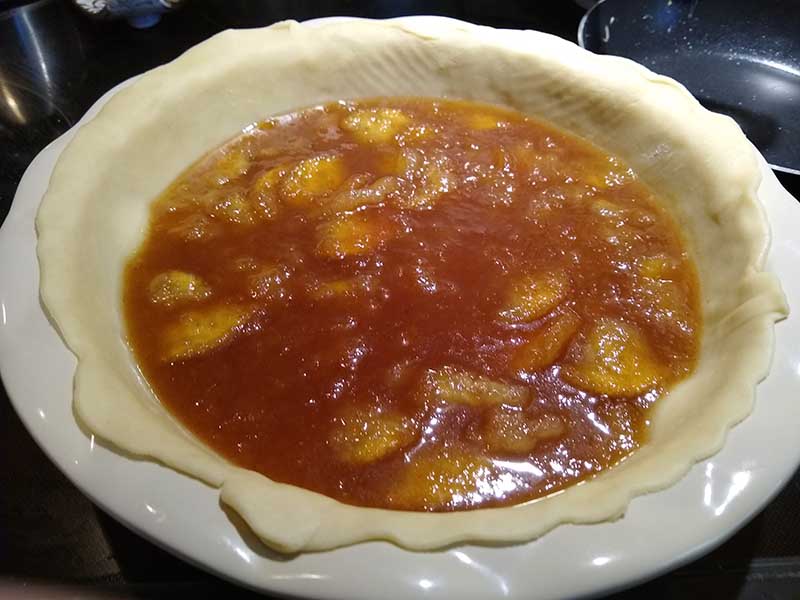
For anyone else who uses this recipe, I recommend seriously considering your pie plate size versus your filling amount. I used a 9 inch pie plate that was about 2 inches deep, and I made half the recipe, which should have been enough for one pie. The pie filling didn’t fill up the pie as much as I would have liked, leading me to wonder if pie plates were smaller in 1965.
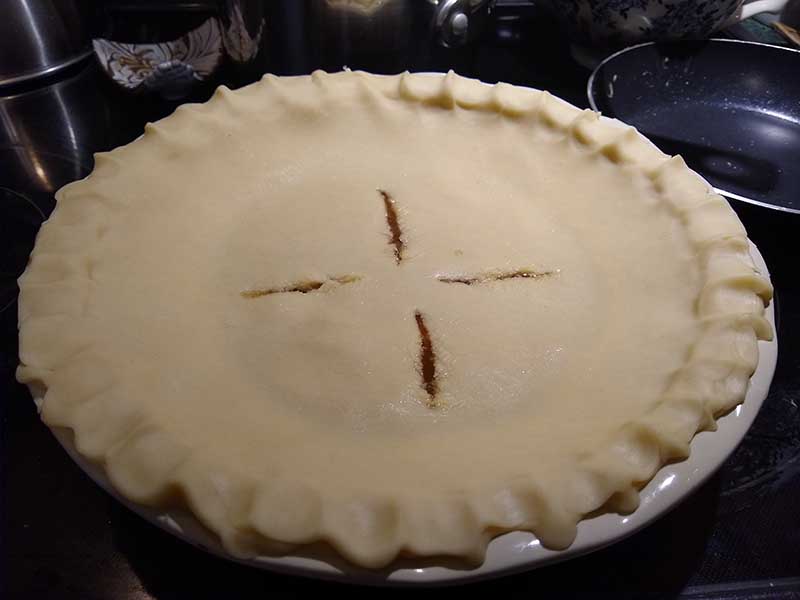
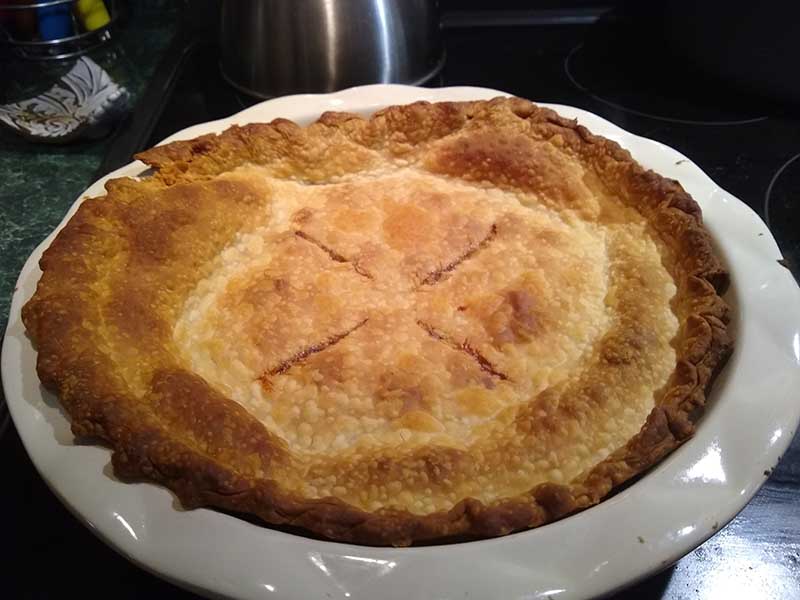
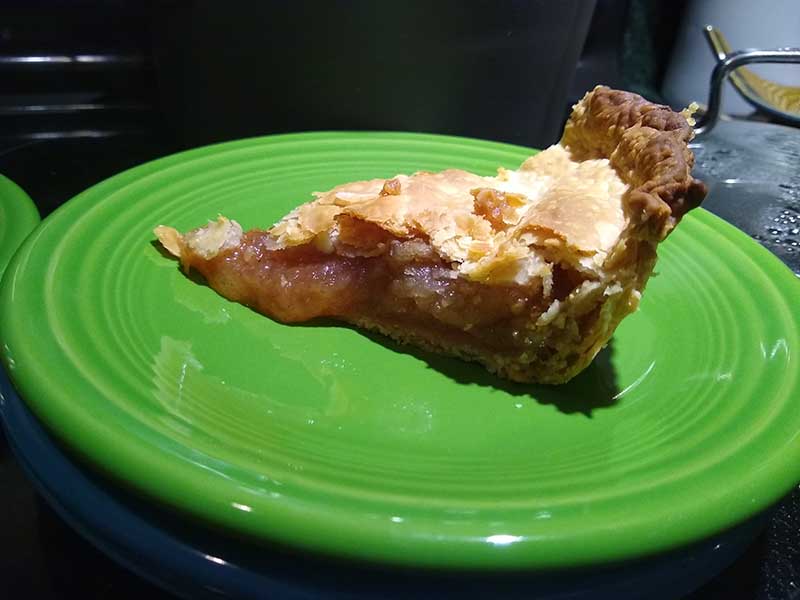
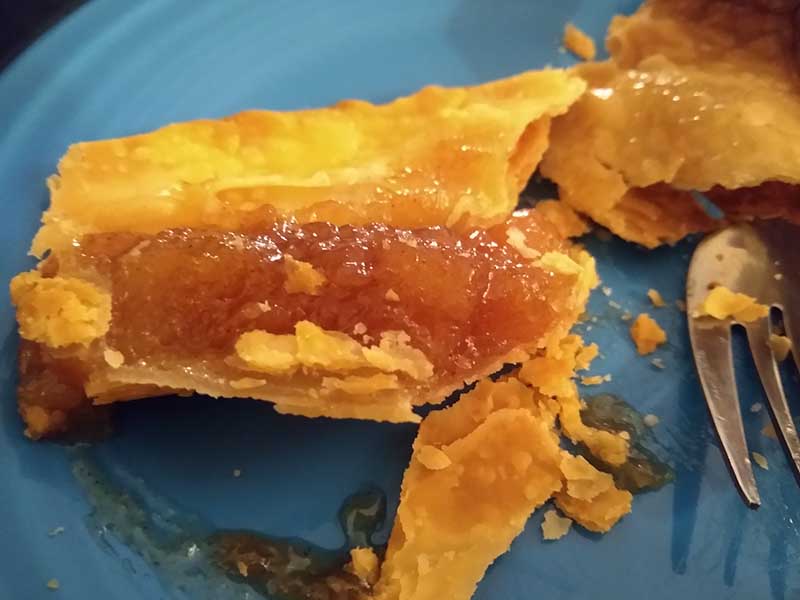
The three people who tasted the pie for me all agreed it turned out better than expected. The general feeling was that if someone gave you a slice after dinner and you ate it quickly, you wouldn’t question that it was apple pie. The biggest critique is the lack of chunks that would add to the real-apple feeling. I wonder if bakers could overcome this lack of chunks by using a more substantial cracker, or not crumbling the crackers before baking. Overall, I decided this mock apple pie was a satisfying substitution.
If anyone is interested in exploring mock foods at home, there are a few recipes to get you started in one of our digitized texts, Souvenir cook book compiled from the best recipes of members of the Woman’s Club of Harper’s Ferry District, 1915, 1920, which is part of the History Center’s Printed Ephemera Collection. These include mock duck, mock oysters, and mock cherry pie. If you make a mock dish, or if you have any great mock food recommendations, let us know!
[1] Olver, Lynne M. “Mock Foods.” In The Oxford Encyclopedia of Food and Drink in America: Oxford University Press, 2004. http://www.oxfordreference.com/view/10.1093/acref/9780195154375.001.0001/acref-9780195154375-e-0531
[2] “Useful Receipts.” Saturday Evening Post (1839-1885) Feb 14 1857: 4. ProQuest. Web. 18 Aug. 2020.






